I'm willing to bet, whenever you have marketing strategy discussions with your team, you typically discuss the same three or four social platforms — Facebook? Check. Instagram? Check. Pinterest? Check.
But — what about Amazon?
In 2018, Amazon launched "Amazon Advertising", (formerly Amazon Marketing Services, or AMS), as a search advertising solution for Amazon vendors. Similar to pay-per-click ads on Google, sellers only pay when shoppers click on ads.
AMS is rapidly growing. In fact, Amazon's ad revenues are projected to amount to 12.75 billion in 2020, with an impressive 23% growth since 2019.
If you're already not using AMS, your team should consider it. Amazon Advertising could become a core advertising platform for many businesses, as well as a good alternative to Google and Facebook.
To help you get started advertising on Amazon, we've created this ultimate guide that fleshes out each type of ad you can run on Amazon and some of their best practices. Read on to learn how to advertise on the ecommerce platform in 2020.
Keep reading, or jump to a specific type of Amazon advertising:
Amazon Advertising Strategy
Even though we'll be describing five unique types of Amazon advertisements that all have different best practices, here are seven general tips for shaping a successful Amazon advertising strategy:
1. Determine your goals.
Whether you want to drive more sales or boost brand awareness, Amazon allows you to align your targets with your goals. For instance, you can deem your Advertising Cost of Sales (ACoS) as your metric of success if you're focusing on driving more sales.
Alternatively, you can deem impressions as your metric of success if you're focusing on boosting brand awareness.
Fortunately, Amazon divides its product page up into "Objectives" if it's easiest for you to figure out which Amazon ad product works best for you depending on your goals. For instance, video ads, display ads, audio ads, and custom advertising solutions are recommended if your goal is to grow brand awareness.
By working backwards from your goals, you'll ensure the strategy you implement on Amazon is best-suited for your business needs.
2. Choose the right products to advertise.
Advertising your most popular products gives you the best chance to convert clicks into purchases. You should also make sure these products are in stock and priced competitively.
Alternatively, perhaps you have a new product or service for which you'd like to increase awareness. When choosing the right products or services to advertise, you'll want to keep your goals in-mind, and also ensure you've done your research to determine whether Amazon is the right platform to showcase your products in the first place.
3. Craft clear, concise, and compelling product detail pages.
Amazon ads can entice shoppers to visit your product detail pages, but the product detail page is what will ultimately turn those shoppers into customers. To craft a persuasive product detail page, consider including accurate and descriptive titles, high-quality images, and relevant and useful product information.
4. Choose where you want to place your ads.
Amazon offers a variety of products within its full advertising suite — for instance, you can create voice ads to display across Alexa-enabled devices, video ads to stream across Fire TV or Amazon-exclusive sites like IMBD, or display ads to attract Amazon users to your brand.
Once you've determined whether voice, video, or search is right for you, you'll want to investigate various options, including sponsored brand ads versus sponsored product ads (which we'll discuss in the next step).
Keep in mind, there are tons of opportunities to place your ads on various devices or sites with Amazon, so consider getting creative. Perhaps an audio advertisement that plays on Alexa-enabed devices is best-suited for your business, or maybe you'll find the highest ROI with Amazon DSP, which allows you to reach Amazon audiences on both Amazon-owned and third-party sites and apps.
5. Test out sponsored brands versus sponsored products.
To explore the differences between sponsored brands versus sponsored products, let's consider the following example.
When I search "baby food" on Amazon, the first sponsored placement I see is Gerber's sponsored brand post, which highlights a few different Gerber products to increase brand awareness and drive sales:
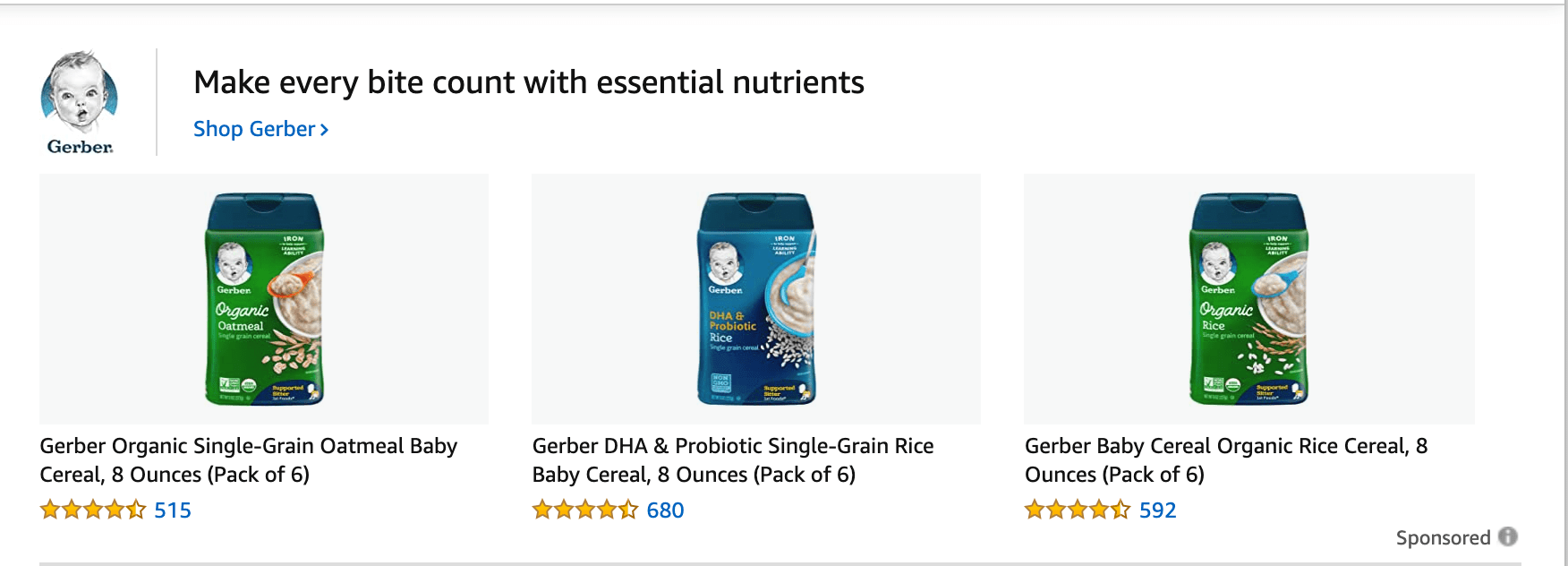
However, consider what happens when I click on an individual Gerber baby food product. In the bottom right of the product screen right below the "Buy Now" button, I see a Happy Family Organics advertisement for an individual product — Stage 4 Fiber & Protein baby food pouches:
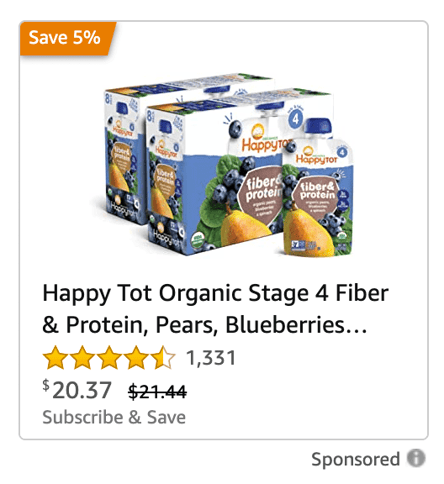
This is the difference between a sponsored brand versus a sponsored product post. Simply put, a sponsored brand post can display a few of your products or services, and is ultimately best-suited for companies aiming to increase brand awareness around an entire product line.
Alternatively, a sponsored product post is a cost-per-click (CPC) ad that promotes individual product listings on Amazon. If you're hoping to drive sales to a specific product or you'd like to target a niche audience (for instance, anyone who's already clicked on a competitor's product), this might be the better option for you.
6. Use category-specific targeting.
Amazon offers advanced targeting functionality to help you display your products alongside top-rated products, or even alongside tangentially-related products — for instance, if you sell K-cups for a keurig, you might serve your ad to Amazon users who've searched for "keurig".
By using Product Attribute Targeting, you're able to show ads to shoppers who've shown interest in other products within your industry. This advanced targeting capability helps you maximize effectiveness of your ads. Plus, it allows you to increase brand recognition with a high-intent audience.
For instance, when I search for basketballs on Amazon and click on a Wilson product, I can scroll down and see a section labelled "Sponsored products related to this item":

Avid basketball players are likely more inclined to take a look at knee braces or sports cones, making this an effective ad placement. Even if shoppers arent' in the
even if I'm not in the market right now, I'll ideally keep these brands in-mind for the future.
7. Take advantage of negative keywords to reduce wasted spend.
It's important you avoid wasting ad spend by including negative keywords — or which keywords you don't want to appear for — to avoid serving your ad to people who won't convert.
Consider, for instance, the difference between a search for "granola bars" and a search for "KIND granola bars". You don't want to appear in a search for "KIND granola bars", when the user is clearly determined to find a specific granola brand.
For this reason, you might want to include brands like "KIND" or "Chewy" in your negative keywords list, so your ad can be served to users with a more general interest in perusing various granola brand products.
You'll also want to include negative keywords if they don't relate to your product to avoid wasting your ad spend towards people who aren't interested in your product. For instance, if your product isn't gluten-free, you'll want "gluten free" on your negative keywords list.
Additionally, you might consider getting more specific to target your ads at a smaller, more high-intent group of people. Rather than simply targeting "granola bar", you might try targeting "low-sugar granola bar", for instance.
Amazon Sponsored Ads
Amazon Sponsored Product Ads are pay-per-click, keyword-targeted display ads for individual products that appear on the search results and product detail pages. With Sponsored Product Ads, there are three types of keywords you can bid on if you decide to leverage manual targeting — broad, phrase, and exact.

Broad keywords can include words before and after the target keyword, like "white hand mixers", if you sell hand mixers. Targeting these keywords will expose your ads to the greatest amount of traffic.
Phrase keywords focus on how the sequence of the words you use changes the context of a query. For example, "stainless steel hand mixer" indicates you sell hand mixers. But "hand stainless steel mixer" indicates you sell stainless steel mixers, but not necessarily stainless steel hand mixers.
Exact keywords are the most constraining type of targeted keyword — a shopper's search query must contain the exact keyword for your ad to show up and no words can come before or after the keyword. For example, if you choose to target exact keywords, you can target an ad for "hand mixer", but it won't show up for the query "electric hand mixer".
Using Sponsored Product Ads, you can also use automatic keyword targeting, which leverages an algorithm to target the most relevant keywords for your product ads.
To gauge the performance of your ads, Sponsored Product Ads offers a reporting tool that displays your ads' clicks, spend, sales, and advertising cost of sales (ACoS).
Amazon Sponsored Ads Best Practices
Targeting
With Amazon Sponsored Product Ads, you can find keywords that have low conversion rates and flag them as negative. This way, Amazon will stop showing your ad to shoppers who search for those queries. Ensuring you flag certain keywords as negative is critical — even if these keywords have a high click-through-rate, their low conversion rate means they're probably not reaching the right type of shoppers.
Bidding
Available in Manual Targeting ad campaigns, you can leverage Bid+ to boost the odds of your ad appearing at the top of search results. You can only use Bid+ on ads that are eligible to appear at the top of search results, but when you do, you can increase your default bid by up to 50%, keeping your top performing campaigns competitive, without having to constantly adjust your bids manually.
Amazon Headline Search Ads (a.k.a. Sponsored Brand Campaigns)
-12.png)
Currently known as Sponsored Brand Campaigns, this type of Amazon advertising allows you to promote keyword-targeted ads of multiple products above, below, and alongside search results.
Using Sponsored Brand Campaigns, you can target three types of keywords -- branded product keywords, complementary product keywords, and sponsored products automatic targeting keywords.
Branded product keywords are a combination of your brand name and a product you sell.
Complimentary product keywords are a bundle of two individual products that influence the demand for each other and can be sold together (like ketchup and mustard).
Sponsored products automatic targeting keywords are search queries that you've already experienced success with while running automatic targeted sponsored product campaigns.
Sponsored Brand Campaigns also lets you feature up to three unique products in your ads, customize your ads' image, headline, and landing page, and even tests these elements.
Below is an image from Amazon that details the keywords that you can use for your sponsored brand campaigns:
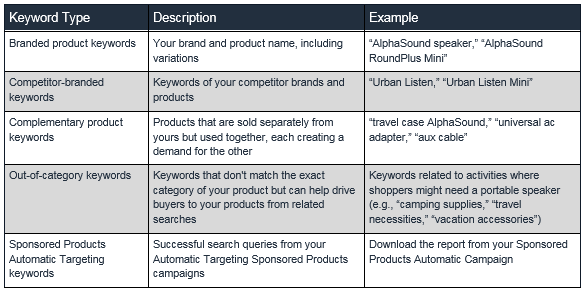
To determine how much you pay for Sponsored Brand Campaigns, Amazon uses a pay-per-click, auction-based pricing model, so you'll never pay more than you bid per click. In addition to manual bidding, you can choose automated bidding, which will optimize your ads for conversion.
If you want to know how well your advertisements are performing, Sponsored Brand Campaigns offers a reporting feature that displays your ads' clicks, spend, sales, estimated win rate for keywords, and ACoS (Advertising Cost of Sales).
Below, Shirt Invaders promotes three of their T-shirts. Clicking on each of the shirts goes specifically to the product page. However, clicking on the "Shop Now" button below the copy takes you to its Amazon Store:
Sponsored Brand Campaigns Best Practices
Ad Creative
It's a good idea to feature three top-performing products in your Sponsored Brands Campaign to increase the amount of clicks and sales your ads generate.
Amazon also recommends including your product's top benefit in your ad's headline because mobile shoppers can only see the ad's main image and headline.
Additionally, when describing your product, try not to claim your product is "#1" or a "Best Seller" -- your ad won't get approved.
Testing
To run the most accurate and fruitful tests, consider only changing one variable at a time, run them for at least two weeks, and anchor the success of your tests to business goals.
Landing Page Design
With Sponsored Brands, you can direct shoppers to your Amazon store or a customized product page. Consider testing how different product pages convert visitors into customers, as well as the order in which your products appear.
Amazon Product Display Ads
Product display ads are pay-per-click ads that appear on product detail pages, customer review pages, on top of the offer listing page, and below search results.
You can also place these ads on abandoned cart emails, follow-up emails, and recommendations emails. Their main objective is to cross-sell or upsell your customers.

Using product display ads, you can use two types of campaign targeting: product and interest. Product targeting is a contextual form of targeting, so you can target specific products and related categories. Interest targeting is a behavioral form of targeting, so you can target shopper interest and reach a larger audience.
Product display ads also let you choose which in-category detail pages you want to advertise on, customize your creative, and offers a reporting tool that displays your campaigns' clicks, spend, sales, advertising cost of sales (ACoS), detail page views, spend, units sold, total sales, and average cost-per-click (ACPC).
Amazon Product Display Ads Best Practices
Targeting
Use product targeting on competitor pages, complementary product detail pages, and your own product detail pages to cross-sell and upsell similar products. Using product targeting on related categories also extends your reach to sections of Amazon's catalogue that are related to your products.
Ad Creative
When crafting your headlines, Amazon allows you to include phrases like "Exclusive", "New", "Buy Now", and "Save Now", but making claims like "#1" or "Beat Seller" will get your ad rejected.
Amazon Native Ads
Amazon Native Ads are ads that you can place on your brand's own website. There are three types of native ads: recommendation ads, search ads, and custom ads.
Recommendation ads are ads you can place in product article pages on your website. These ads are dynamic, so Amazon will populate your most relevant product recommendation based on your web page's content and visitors.
Search ads are ads that populate on your website based off keywords that your customers search for on Amazon or on your website.
-8.png?width=600&name=pasted%20image%200%20(3)-8.png)
Custom ads allow you to select your own assortment of products you'd like to promote and place them on your product article posts.
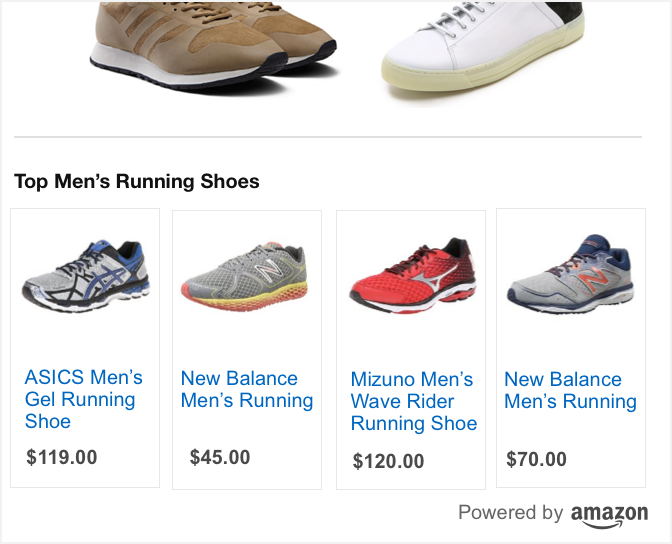
Amazon Native Ads Best Practice
Just like a call-to-action on a blog post, make sure your native shopping ads are extremely relevant to the pages you place them on. This way, when your website visitors finish reading your post, the ads are a natural next step and can lead to more conversions.
Amazon Video Ads
Amazon Video Ads are ads that you can place on Amazon-owned sites like Amazon.com and IMDb, Amazon devices like Fire TV, and various properties across the web. You can buy Amazon video ads regardless of whether you sell products on Amazon or not, and you can set your ad's landing page as an Amazon product page, your own website, or any other web page on the internet.
-7.png)
If you want to work with Amazon's video ad consultants, you can sign up for their managed-service option, but to be eligible, you usually need to spend a minimum of $35,000 on video ads.
Amazon Stores
Users can promote their brand or product on your own multi-page Amazon Store. Using Amazon's templates or drag-and-drop tiles, you can showcase your brand's products or portfolio of work.
With Amazon Stores, brands get an Amazon URL and can view traffic analytics, which enables them to keep track of sales, traffic sources, and ad campaigns.
Additionally, creating an Amazon Store is free.
Amazon Stores Best Practices
Once you create an Amazon Store, you can use the analytics tool to find the top performing keywords which have converted to sales. Additionally, the analytics tool will let you know which products sell.
This lets you know which products you might want to consider for a paid ad campaign. Plus, it also shows what potential buyers are interested in.
Below is an example of an Amazon Store:
When you create an Amazon Store, the best practices are similar to best practices of any landing page — use clear photos, easy-to-read captions, and clear pricing. Additionally, make sure you showcase your highest performing products. Or you could opt to introduce new products on your Store as well.
Before you craft your Store, come up with the products you want to feature on your navigation. Then, list all your products that you will showcase on those pages. Lastly, gather the clear, professional photos of your product, write your captions, and list your prices.
Ultimately, selling on Amazon can be an impactful marketing strategy for ecommerce brands. As consumers continue to lean into online shopping, Amazon advertising can play a large role in your online sales.
Editor's note: This post was originally published in February 2019 and has been updated for comprehensiveness.
from Marketing https://ift.tt/2V6ch71
via

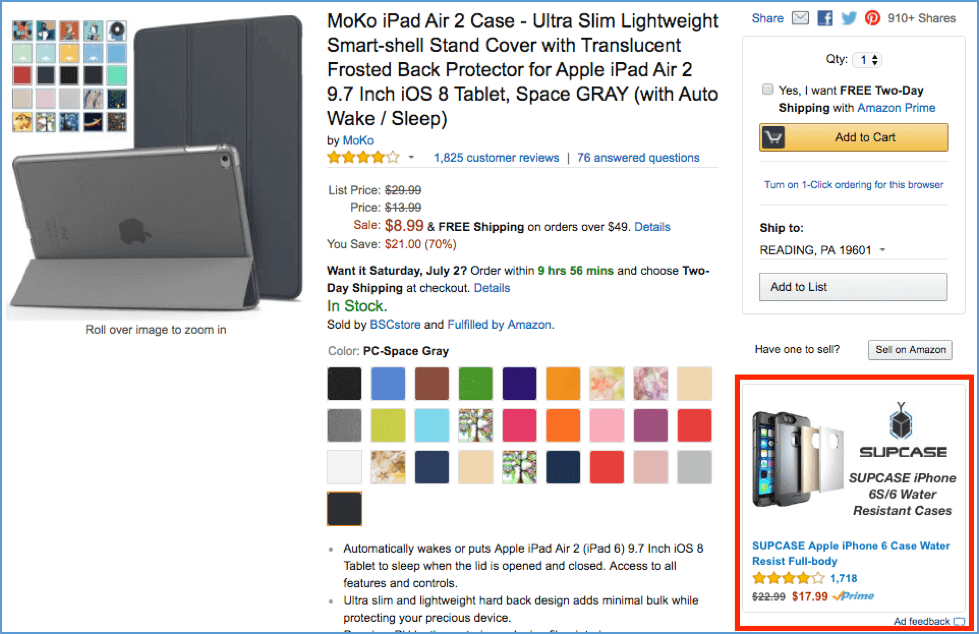
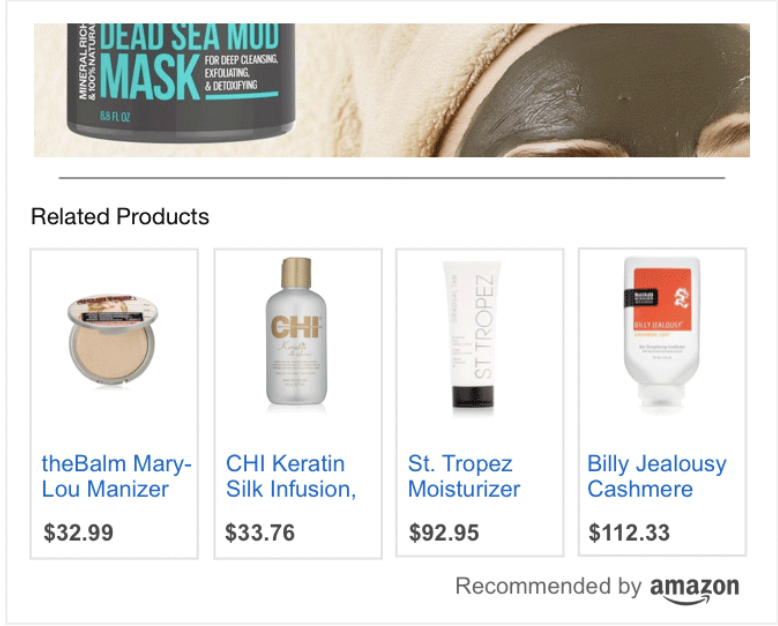
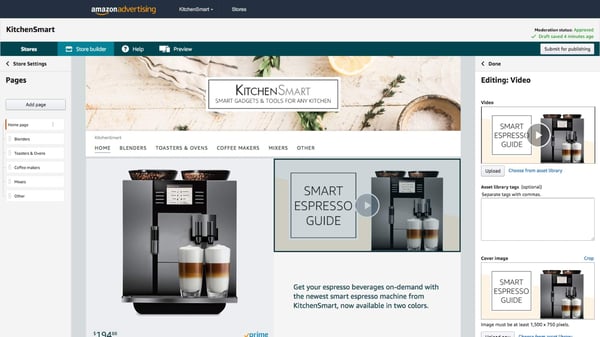
No comments:
Post a Comment